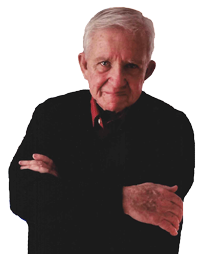Last year the musical hit of Broadway was “Shuffle Along, or the Making of the Musical Sensation of 1921 and All That Followed.” The production won four Drama Desk Awards, including Outstanding Musical, and was nominated for ten Tonys. The original production of 1921 was the first all-black musical on Broadway that was not a minstrel show, and introduced worldwide musical stars Josephine Baker and Paul Robeson. Poet Langston Hughes hailed that original musical as the launch of The Harlem renaissance, an artistic and cultural revolution in America. One of the show’s songs became an all-time popular hit – “I’m Just Wild About Harry.”
Did you know that the co-author of the song and of the musical, Noble Sissle, was from Indianapolis? And he went to Butler? Oh – and did you know he wrote The Butler Fight Song (“We’ll sing the Butler War song/ we’ll give the fighting cry. . .” I didn’t either. It’s part of the great history of jazz and black music that was born and flourished here on Indiana Avenue and never acknowledged (much less celebrated) by the city’s establishment.
Other cities promoted and made tourist attractions of their jazz history – Bourbon Street in The French Quarter of New Orleans, Beale Street in Memphis. Kansas City has a Jazz Museum and claims to be “one of the cradles of jazz.” It lists other jazz “cradles” as New Orleans, Chicago, St. Louis, Pittsburgh, Philadelphia, and New York City.” The jazz mecca of Indiana Avenue is not even mentioned, and is only a blip in the Ken Burns documentary of jazz. We spent millions of dollars luring a Super Bowl in order to promote tourism and attract business, but we hid our brightest musical lights under a bushel of neglect.
I wrote in a blog buy ambien new york last week of a new book on Indiana Avenue being written by Aleta Hodge (who you heard on “The Uncle Dan Story Hour” on WFYI Monday night, and can soon be heard here on my website.) There are two good books on that legendary musical thoroughfare already available: Indianapolis Jazz: The Masters, Legends, and Legacy of Indiana Avenue by David Leander Williams [The History Press] is an excellent and thorough survey of the birth and flowering and death of the Avenue.
Indiana Avenue: Black Entertainment Boulevard by Rev. C. Nickerson Bolden [Author House] takes a hard and honest look at the demise of the once brilliant musical showplace and the healthy neighborhood that once grew around it. Bolden says sadly and truly that “The Indiana Avenue community was an amenity. Few past or current city officials have really acknowledged this fact.”
I have a book on the history of the city and another one of the state. Neither mentions Indiana Avenue or any of the world-renowned artists it spawned. The fine documentary “The School That Changed a City” tells of the important careers of successful graduates of Crispus Attucks in sports, law, medicine, and the military, but no mention is made of its famous musicians (except for one opera singer) or the superb music department that launched them. One of the musicians who taught there was Jerry Daniels, an original member of “The Ink Spots.” I wish I had known that he and his quartet were talented young men from Indianapolis when I was a kid loving their music. I might have learned that there were other black Americans besides Amos and Andy and Jack Benny’s bug-eyed “Rochester” and the bandana-bonneted Aunt Jemima on the pancake box.
